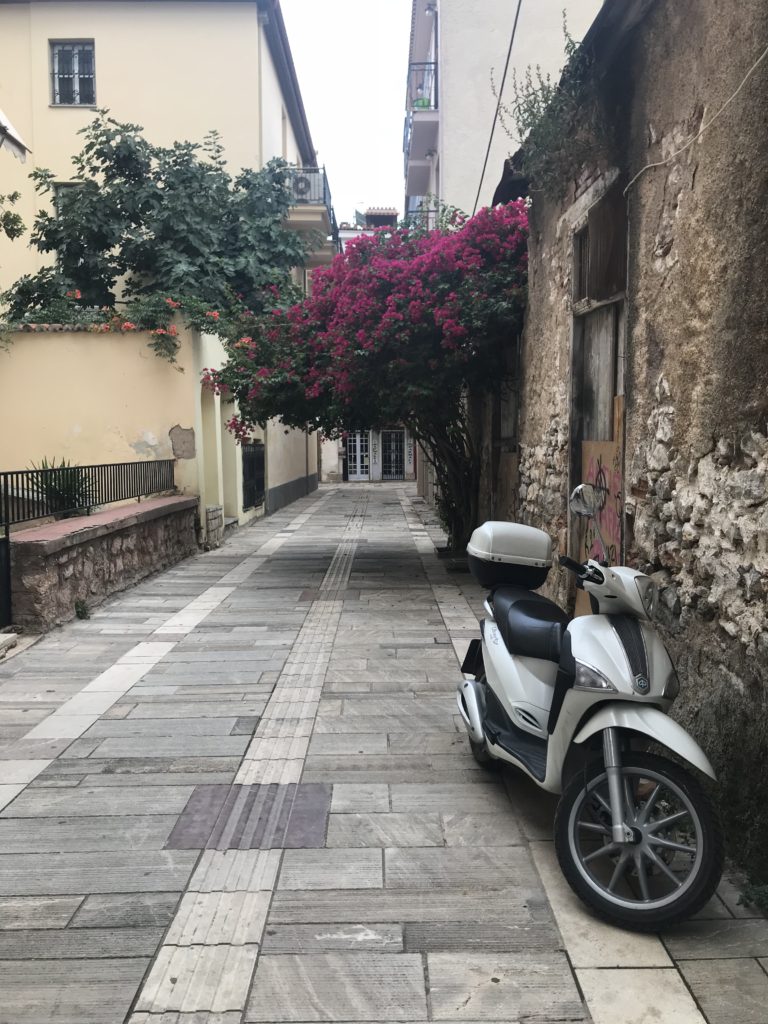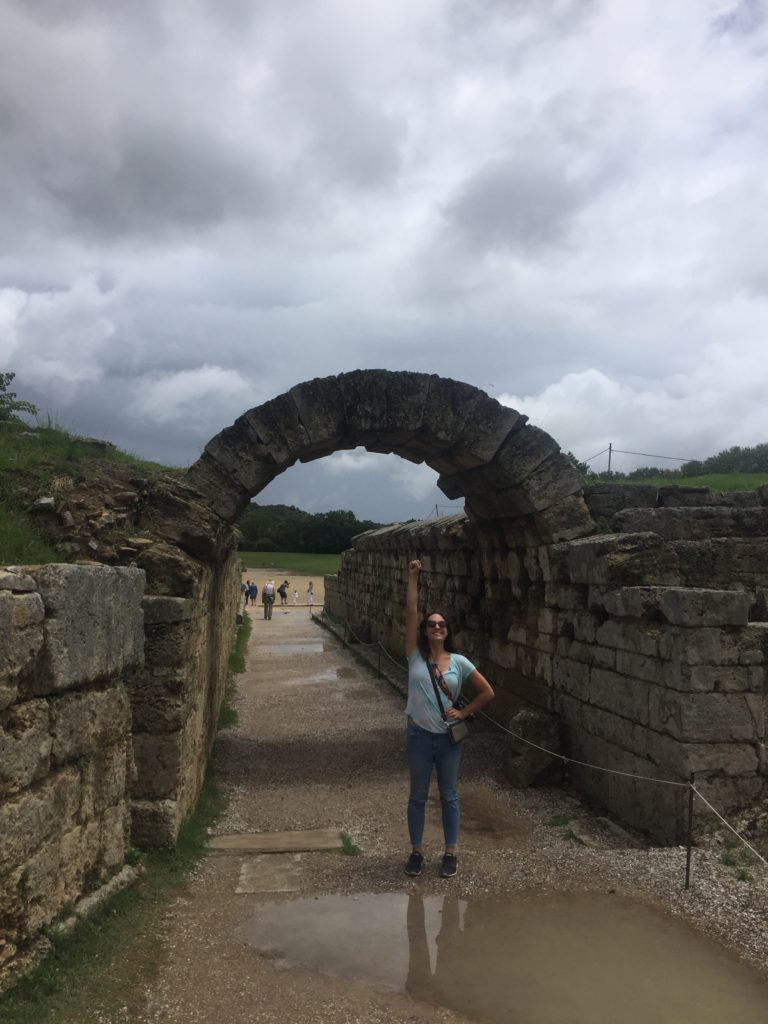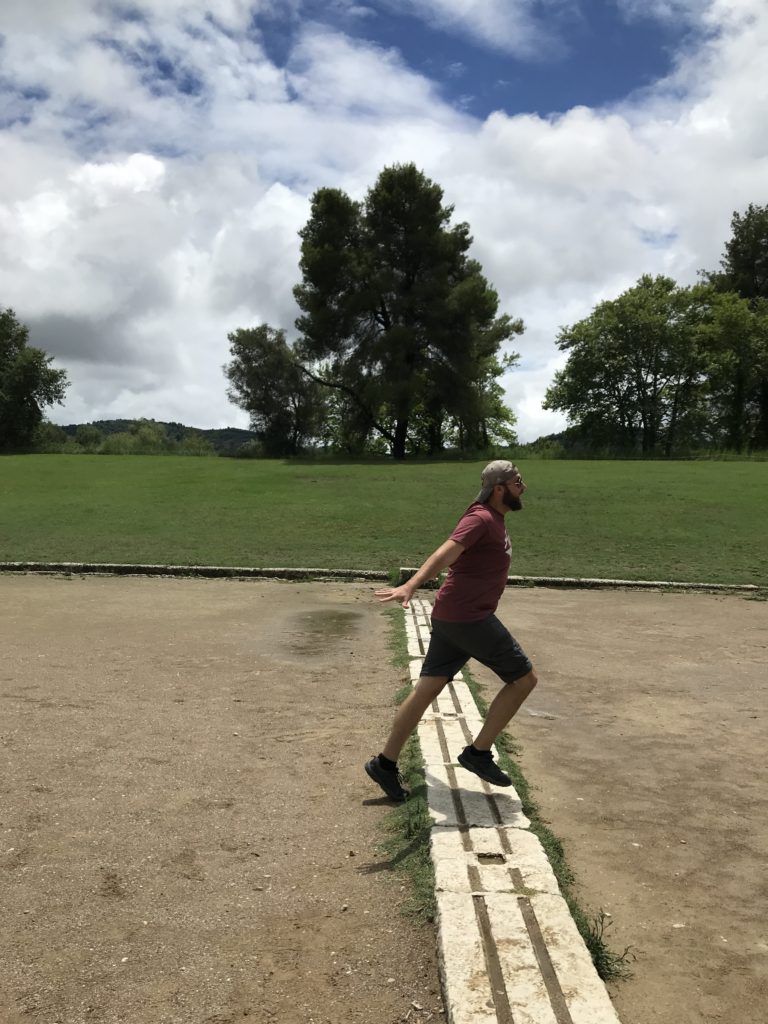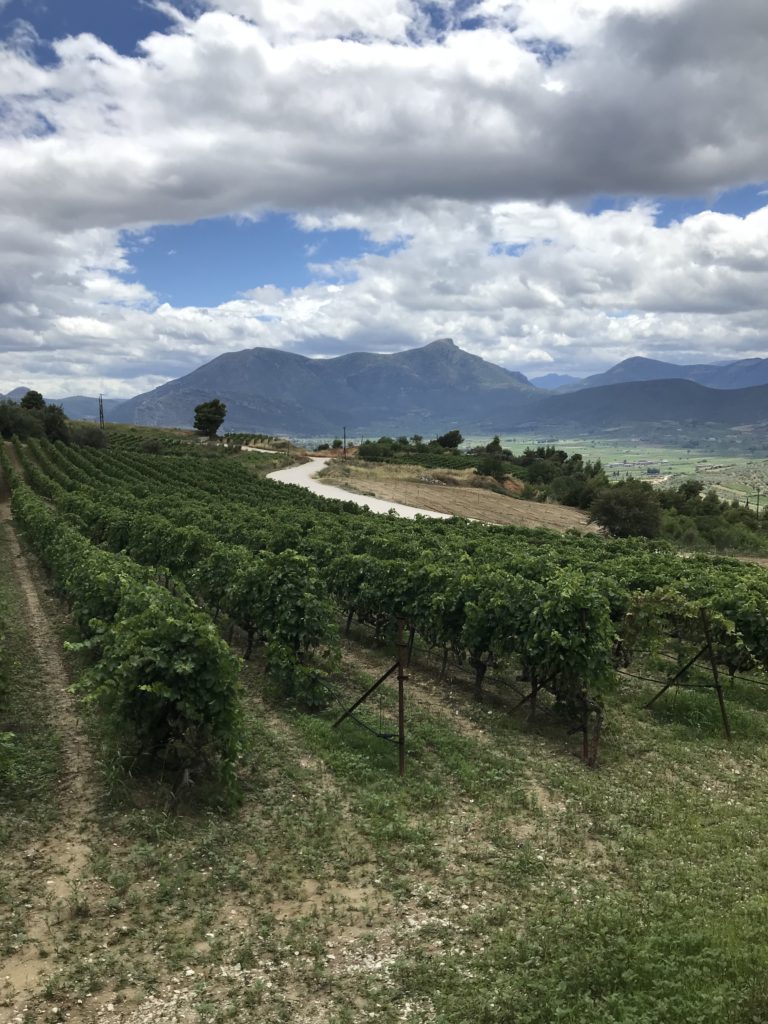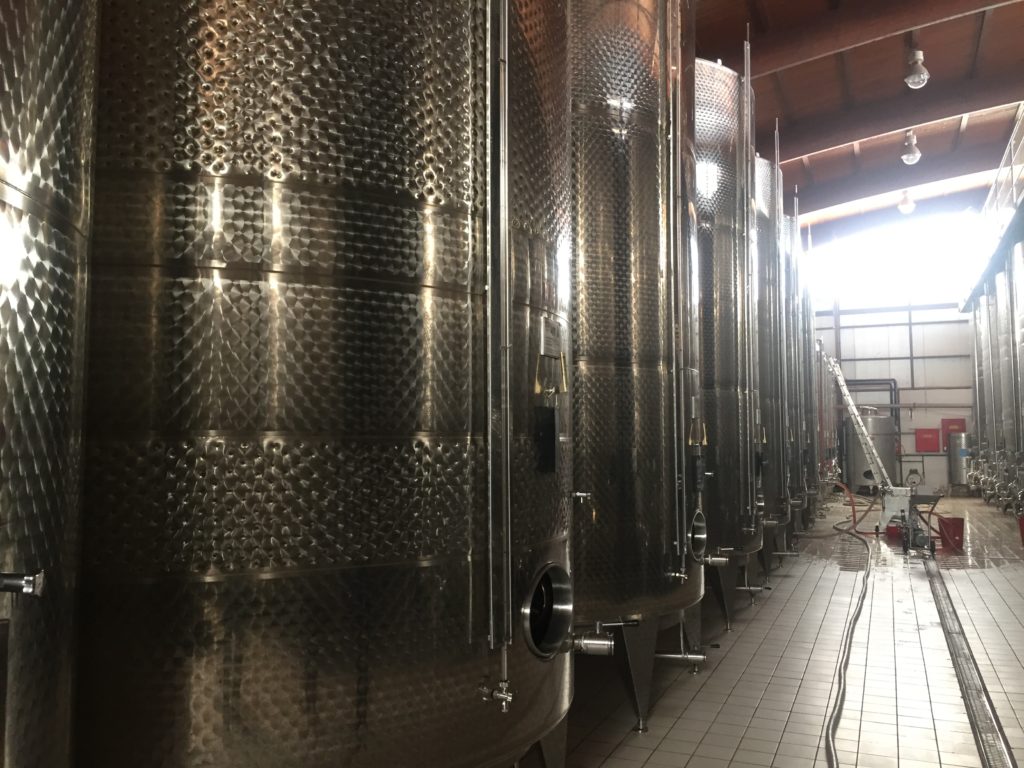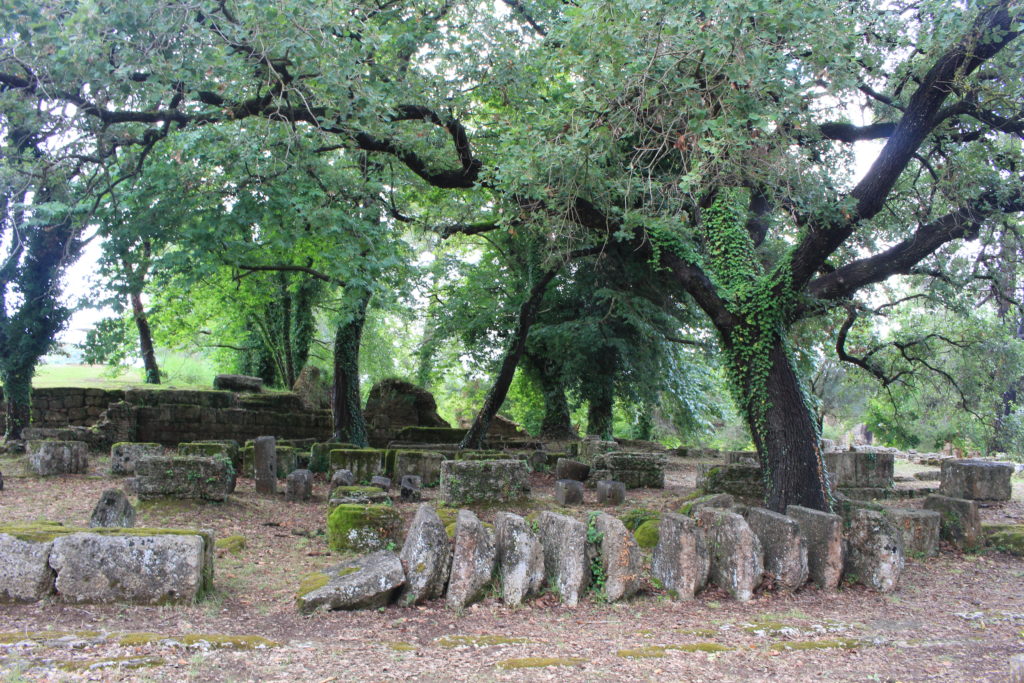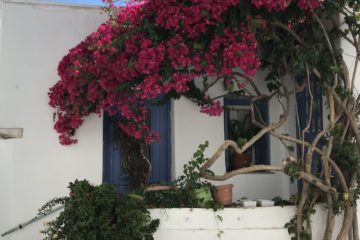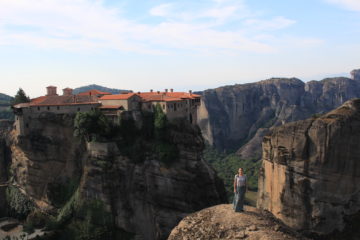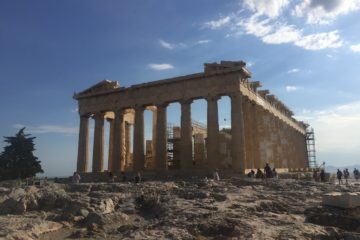It’s not controversial to say that Greece is a popular tourist spot. Makes sense. The interesting thing is that it seems to be a somewhat narrow type of tourism, with people mostly spending time in Athens and the islands (and even then, it’s usually just a couple famous islands). Since we have a decent amount of time to explore the country, we decided to buck the trend and go to the region of Greece where a lot of Greeks go on vacation: the Peloponnese. In doing so, we figured we’d have our home base be Nafplion on the Eastern coast of the region, which is regarded by many to be one of the most beautiful and charming cities in Greece. Fortunately, the city largely lived up to these expectations with its marble-covered walkways, the back alleys of the old town and its picturesque port with seaside-views from all angles, including the veranda in our hotel, where we spent each morning (and some nights).
Getting to Nafplion involved another long drive from Arachova and another sizable number of tolls, the combination of which left me weary and our combined wallet lighter. These are the unfortunate perils of road tripping in Greece, which is otherwise (somewhat) offset by the beautiful scenery of the lush mountains, hills and seaside views. Originally we were planning to do some exploring on our first full day in Nafplion, but general travel fatigue from copious amounts of driving and a patch of questionable weather caused us to decide to take the day to relax. Accordingly, we bounced around a couple of cafes to relax for the day, finishing it with a delicious dinner over cheap wine where we played an epic game of backgammon. It was a quiet day to rebuild our strength, which is occasionally needed to avoid travel burnout. [Editor’s note: One of my favorite discoveries about Greece is that every restaurant has “barrel wine,” basically a house wine that is served by the liter in carafes, and you just order by color: white, rose, or red. It’s super cheap and not bad at all, so getting a half liter for a few euros every night has been such a luxury after so many months of not having wine anywhere in Asia!]
Rejuvenated for our second day, we scoffed at signs of potentially inclement weather and decided to set out to visit the birthplace of the Olympic Games: Olympia. Unfortunately, it is located 2.5 hours away from Nafplion, requiring us to take a decently lengthy day trip to reach it, during which the weather gods decided to rear their malicious heads. The drive was intermittently lovely and brutal, as we plowed through aggressive rainstorms and wind in our tiny car. Once we arrived in Olympia, we set out to see the ruins of the site. While similar in many respects to the other ruins we’ve seen in Greece, the cool part was the centerpiece of the site – the stadium where the first Olympic track was located. Our arrival there coincided with a decent break in the weather, so we did what all tourists gotta do there – run a bit on the track and soak up the setting. Almost immediately after we left the track, it began to pour viciously which forced us to seek shelter in a guard shack with some employees before proceeding to finish with the Olympia archaeological museum (fairly similar to other archaeological museums we’ve visited, but with some cool/unique exhibits we enjoyed) and the museum on the history of the Olympic Games (not much to see, but containing extremely interesting information!). [Editor’s note: Agreed that the ruins themselves weren’t that amazing, and/or we’re a little ruined-out by this point. But the museum of the history of the Games was really cool, as it talked extensively about all the sports involved, including when they were added or taken away, the role of women (not allowed to even enter and watch the Games, but they had their own version of the Games, also every 4 years but on offset years to the men), and included info about the rules. My favorite fact was that if an athlete broke a rule he was fined, and the money was used to erect a statue of Zeus with the athlete’s name, his father’s name, and his city inscribed on it; all the athletes then had to walk past this row of shame-statues to get into the stadium. Nicely done, Ancient Greeks.]
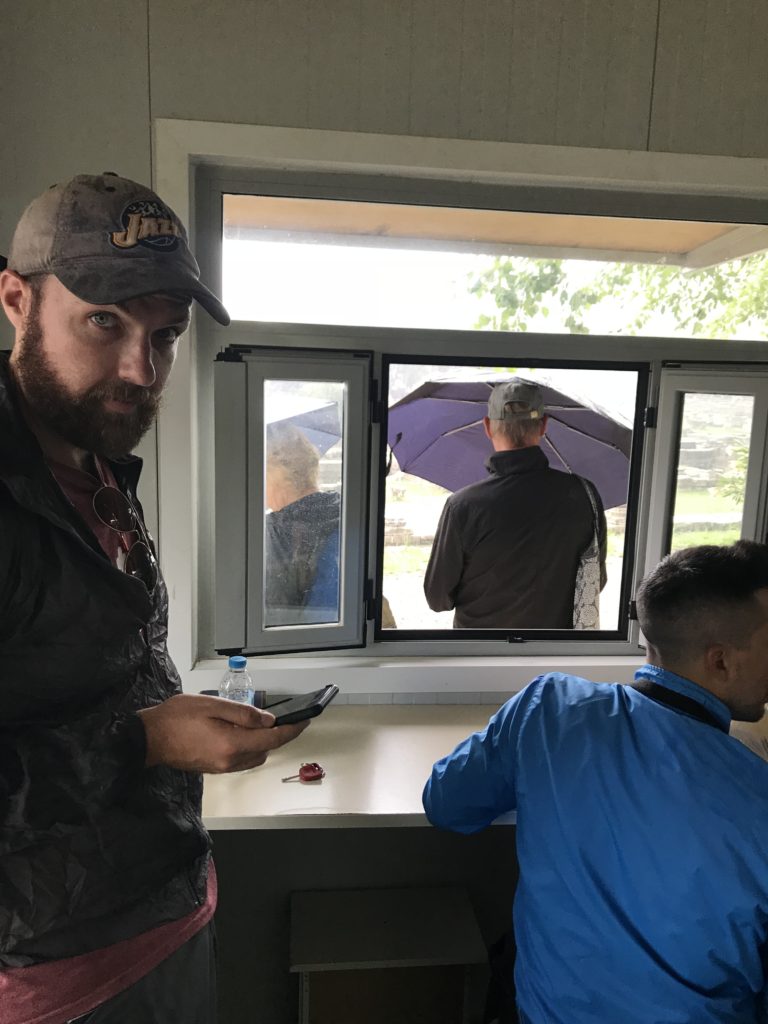
This is where the Ancient Greeks hid during rain storms. Just walking in the footsteps of my forefathers.

One of the impressive exhibits at the archaeological museum. This lined the top of one of the temples at Olympia, which is nuts.
Though we were fairly pooped after our lengthy drive back to Nafplion, we managed to rally and wander into town to the small Karonis Distillery for a tasting session and lessons about the production of ouzo, tsipouro and other liqueurs. Led by the fifth generation owner of distillery, one of the oldest continuously run distilleries in all of Greece (started in 1869), we were treated to a delightful (and private!) presentation/discussion about how they were made, which was really enjoyable and interesting. Throughout this conversation he also took the time to explain some of the extremely old and awesome artifacts in their tiny museum, including the first ouzo distiller the company ever used and a copy of the first Greek laws once the country obtained independence from the Ottoman Empire which actually named Nafplion the capital of the country (for 4 years, before it was transferred to Athens). To top it off, we were able to enjoy a super delicious tasting of the ouzo (which we loved), the tsipouro (which we liked, but not as much) and masticha, another regional liqueur that is unique to Greece (it’s made from the sap of trees that only grow on half of one island in Greece…and literally no place else in the world) and really delightful. [Editor’s note: apparently the resin from the sap was originally used as a chewing gum type of treat. It’s now used in candy, liqueur, and even a gelato flavor we saw! It’s popular enough that people have tried to grow the tree all over the world and while the tree grows just fine, it apparently doesn’t produce the special sap except on this one island – fascinating.] All in all, a great evening!
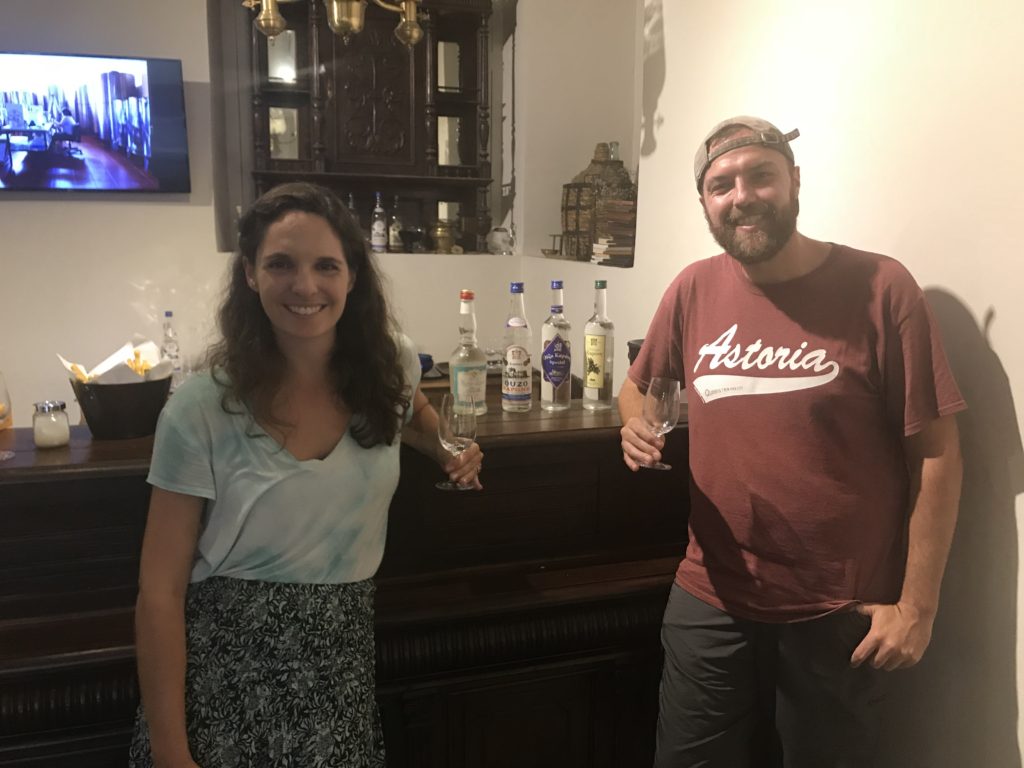
Can’t tell if those smiles are from the enjoyable explanation of the distillery or the delicious ouzo? Neither can we.
The following day, to build on the theme of our ouzo-tasting evening, we decided to spend a day exploring wineries in nearby Nemea, the largest and most prominent wine region in Greece. We were expecting it to be like any other wine tasting we’ve enjoyed, where the wineries are crawling with other folks enjoying the settings and wine throughout the day. Instead, we were (pleasantly) shocked to discover that we were the only people at the tastings at all three of the wineries we visited that day, which was awesome! The setting of the wineries (which were all fairly close to each other) gave us stunning panoramic views (the best of any wineries either of us have ever visited), while each of the wineries gave us interesting private tours of the wine-making process and extremely delicious tastings at a super cheap rate. Aided by the terrific weather we enjoyed, the day was a stunning success that left Jess pretty tipsy (I had to spit some of the wine out as the driver) and smiles on both of our faces. [Editor’s note: I know that on a global scale Greek wines aren’t considered to be anything special – but these were really good! It was fascinating to learn about some of the specific grapes that are native to the region and to Greece in general: Agiorgitiko, or St. George’s grape, is from Nemea, while Assyrtiko is from Santorini.]
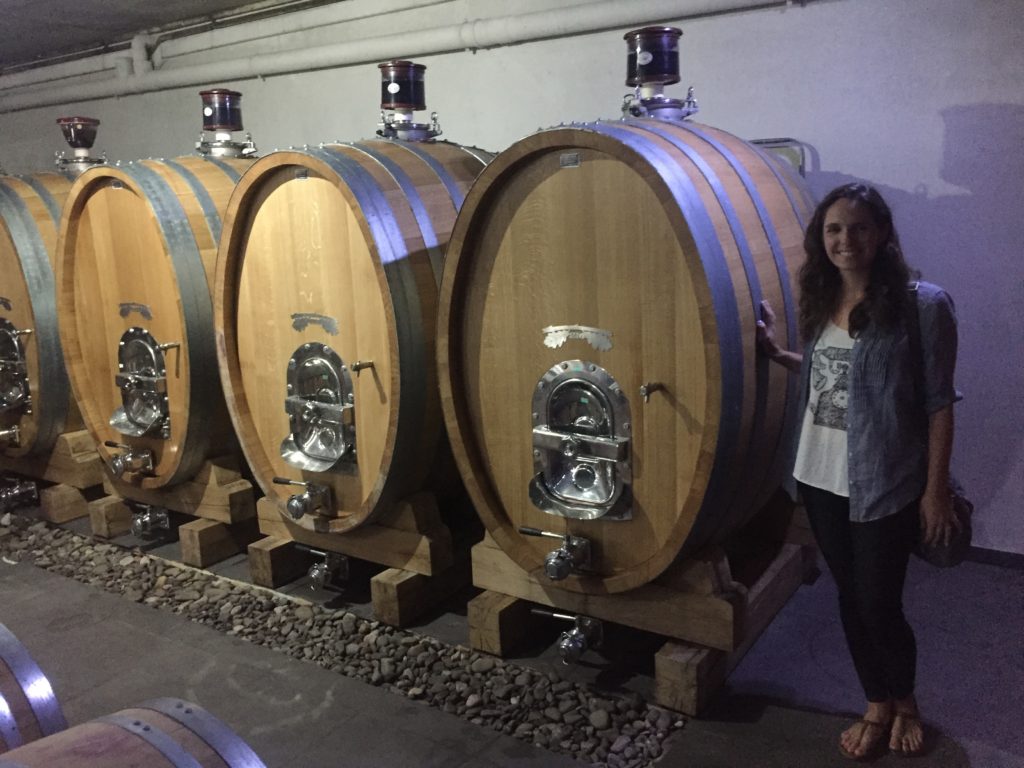
You know it’s a good sign when the wine ages in barrels larger than you. Quantity + quality = drunk.
That pretty much concluded our time in Nafplion, as the next morning we drove to the Athens airport to drop off our rental car and make our way to the port to catch a ferry to Naxos, the first of two Cycladic islands where we’ll be spending a combined week. In all, we really loved our time in Nafplion. It was a great jumping-off point for the Peloponnese and we enjoyed spending enough time there to really familiarize ourselves with the city and properly explore it. With that said, stay tuned for tales of our cute towns and copious amounts of beach time in the Cycladic Islands of Naxos and Paros!
